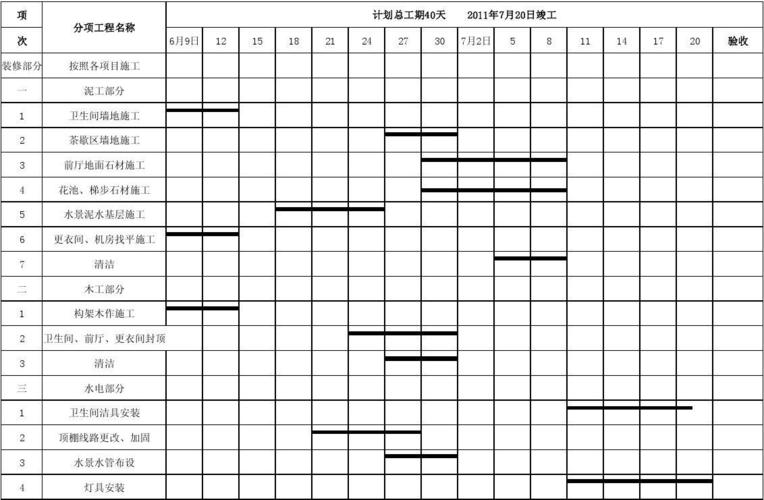 摘要:
**Title:UnderstandingtheProcessofPropertyRenovation:AComprehensiveGuide**Renovatingaproper...
摘要:
**Title:UnderstandingtheProcessofPropertyRenovation:AComprehensiveGuide**Renovatingaproper... Title: Understanding the Process of Property Renovation: A Comprehensive Guide
Renovating a property involves a series of systematic steps to ensure a successful outcome. From planning and budgeting to execution and finishing touches, each phase demands careful attention and expertise. In this guide, we'll walk through the essential processes involved in renovating a property, highlighting key considerations at every stage.
Phase 1: Planning and Preparation
1.
Assessment of Needs:
Evaluate the current state of the property and determine the scope of renovations required. Identify areas that need attention, such as structural repairs, aesthetic enhancements, or functional upgrades.2.
Budgeting:
Establish a realistic budget for the renovation project. Consider factors such as material costs, labor expenses, permits, and unforeseen contingencies. It's crucial to allocate funds wisely to avoid overspending.3.
Design Concept:
Develop a clear vision for the renovated property. Collaborate with architects, designers, or contractors to create detailed plans and drawings that reflect your preferences and goals.4.
Permits and Approvals:
Obtain necessary permits and approvals from local authorities before commencing any renovation work. Failure to comply with regulations can lead to delays, fines, or legal issues.Phase 2: Demolition and Structural Work
1.
Demolition:
Clear out existing structures, fixtures, and materials that are no longer needed. Exercise caution to preserve elements that will be retained or repurposed during the renovation process.2.
Structural Repairs:
Address any structural issues identified during the assessment phase. This may involve repairing foundation cracks, reinforcing loadbearing walls, or replacing damaged roofing materials. Hiring qualified professionals is essential for ensuring structural integrity.Phase 3: Electrical, Plumbing, and HVAC Systems
1.
Electrical Work:
Upgrade or install electrical wiring, outlets, and fixtures according to modern safety standards. Consider the placement of lighting, switches, and appliances to optimize functionality and energy efficiency.2.
Plumbing:
Inspect, repair, or replace plumbing systems to prevent leaks, improve water flow, and enhance water efficiency. Install fixtures such as sinks, faucets, showers, and toilets with attention to quality and aesthetics.3.
HVAC Systems:
Evaluate heating, ventilation, and air conditioning (HVAC) systems to ensure proper functioning and energy efficiency. Clean ducts, replace filters, and upgrade equipment as needed to maintain indoor comfort and air quality.Phase 4: Interior Finishes
1.
Walls and Ceilings:
Prepare surfaces for painting or wallpapering by patching holes, sanding, and priming as necessary. Choose paint colors or wallpaper designs that complement the overall aesthetic of the property.
2.
Flooring:
Install new flooring materials such as hardwood, tile, laminate, or carpeting based on durability, maintenance requirements, and design preferences. Ensure proper installation to avoid issues such as uneven surfaces or squeaking.3.
Cabinetry and Fixtures:
Mount cabinets, shelves, and other builtin fixtures in kitchens, bathrooms, and living spaces. Select hardware and accessories that enhance functionality and aesthetics while maintaining durability.Phase 5: Exterior Enhancements
1.
Facade:
Improve curb appeal by refreshing exterior finishes such as siding, stucco, brickwork, or paint. Repair or replace damaged elements to create a cohesive and inviting facade.2.
Landscaping:
Enhance outdoor spaces with landscaping features such as gardens, pathways, patios, and decks. Choose plants, hardscape materials, and outdoor furniture that suit the climate and architectural style of the property.Phase 6: Final Touches and CleanUp
1.
Finishing Touches:
Add decorative elements such as trim, molding, hardware, and accessories to complete the look of the renovated property. Pay attention to details to create a polished and cohesive aesthetic.2.
Quality Inspection:
Conduct a thorough inspection of the renovated property to identify any defects, deficiencies, or areas needing touchups. Address issues promptly to ensure the quality and durability of the work.3.
CleanUp and Presentation:
Remove debris, dust, and construction materials from the site to prepare for occupancy or sale. Consider hiring professional cleaners to perform a deep clean and make the property movein ready.Conclusion
Renovating a property requires careful planning, skilled craftsmanship, and attention to detail at every stage of the process. By following a systematic approach and engaging qualified professionals, you can transform a dated or deteriorated property into a beautiful and functional space that meets your needs and exceeds your expectations.
Remember to prioritize safety, quality, and sustainability in your renovation decisions to maximize the longterm value and enjoyment of your investment. With proper planning and execution, your renovated property can become a source of pride and satisfaction for years to come.
[contact for further assistance](mailto:contact@example.com)








![中国公路(高速版)(已与《中国公路》合刊)[下载征订单][收藏杂志]](https://dgxrflyyxgs.com/zb_users/theme/koilee/style/noimg/7.jpg)